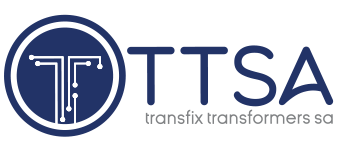German development bank KfW has approved a R2.8-billion concessional loan for the City of Cape Town, which will use the funding to strengthen its electricity infrastructure and integrate renewable-energy supply. The loan conditions were not disclosed, but the financial terms were described as “favourable”, as well as supportive of South Africa’s just energy transition.
Posts
Cape Town is set to accelerate its switch to green energy and limit reliance on erratic supply from the state power utility after winning a €150-million ($157-million) loan from Germany’s KfW Development Bank. The loan, which was agreed in December and will be announced this week at a ceremonial signing, will be used to bolster the power grid of South Africa’s second-biggest city to allow the transmission of more renewable energy, the bank said. It could also be used to help the municipality generate more of its own power, it added.
In this opinion article, Energy Council of South Africa CEO James Mackay argues that the recent shock return of Stage 6 loadshedding does not signal a return to the dark days of 2023. However, he also warns that without accelerating reforms and investment, South Africa could face a renewed crisis as early as 2028.
A US initiative to increase electricity supply in Africa has been dismantled by the Trump administration after more than a decade of work, according to people familiar with the matter. Almost all of Power Africa’s programs have been listed for termination and the majority of its staff fired, said the people who asked not to be identified as they aren’t authorized to speak to the media. Some remaining programs, particularly those aimed at connecting projects with US companies, may be retained under other US agencies, they said.
Power utility Eskom suspended loadshedding at 05:00 on February 26, following the recovery of generation capacity and the replenishment of emergency reserves. “We maintain our guidance that loadshedding is largely behind us due to structural improvements in the generation fleet. Our focus remains on eliminating loadshedding as a structural constraint on the economy.
The G20 Energy Transition Work Group will have its inaugural meeting this week to discuss the energy priorities that South Africa is seeking to place on the international agenda during its G20 presidency. Electricity and Energy Minister Dr Kgosientsho Ramokgopa has confirmed that the meeting will take place virtually on February 27 and 28 and will be attended by senior officials from all G20 countries, including a senior official from the US Department of Energy.
Cape Town businesses and households have broken through the R55-million earnings mark since the start of the city’s Cash for Power programme in 2022/23, until January 31 this year. Cape Town is the first metro to buy excess solar PV power from small-scale generators, with more than 1 840 small-scale power sellers now participating.
South African energy solutions provider Decentral Energy has secured a R300-million funding commitment from specialist investment company Futuregrowth Asset Management. The funding will enable Decentral Energy to accelerate the expansion of its integrated energy asset portfolio and to continue delivering sustainable energy to customers in the retail, tourism, agriculture, residential and commercial and industrial (C&I) sectors across the country.
Power utility Eskom downgraded loadshedding to Stage 2 from 05:00 on Tuesday, from Stage 4 on Monday. This followed the successful recovery of eight out of ten generation units and the restoration of 3 808 MW from units that tripped over the weekend.
Platinum group metal (PGM) producer Northam has finalised a power purchase agreement (PPA) with an independent power producer (IPP) to supply wheeled electricity from the 140 MW Karreebosch Wind Farm, on the border of the Northern Cape and the Western Cape, to provide energy to its PGM operations in Limpopo and the North West. This is the second significant renewable-energy deal for Northam, following the finalisation of a PPA in respect of an 80 MW solar power plant to service its Zondereinde mine, as announced in October 2024.
INDUSTRY NEWS
- Eskom offers more details on envisaged roles of the NTCSA and the TSODecember 18, 2025 - 11:04 am
- NTCSA says any electricity deal to salvage Mozal must ensure its financial sustainabilityDecember 17, 2025 - 3:01 pm
- ENGIE expects to start construction of 240 MW Corona PV project in late 2026December 17, 2025 - 1:04 pm
WHERE TO FIND US
Address
9 Yellow Street
Botshabelo Industrial Area
Botshabelo, Free State
Call / Email Us
Tel: +27 (0) 61 956 6772
Email: info@transfix.co.za
